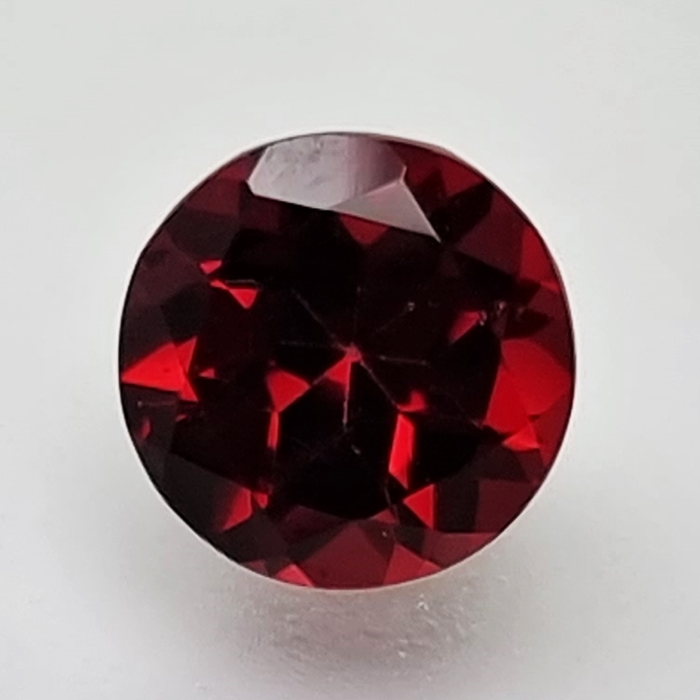Pyrope Garnet: Gemstone Information
Characteristics of Pyrope Garnet:
Color: Pyrope garnet typically exhibits a rich red hue, ranging from a deep crimson to a vibrant reddish-orange. This distinct coloration is due to the presence of iron in its chemical composition.
Hardness: Pyrope garnet has a hardness of 7 to 7.5 on the Mohs scale, making it relatively durable and suitable for use in jewelry and lapidary purposes.
Transparency: While pyrope garnet can occur in transparent to translucent forms, it often displays exceptional clarity, allowing light to pass through and enhance its color and brilliance.
Luster: The luster of pyrope garnet is typically vitreous to resinous, imparting a captivating shine to polished specimens.
Crystal Structure: Pyrope garnet crystallizes in the cubic system, forming dodecahedral or trapezohedral crystals. It can also occur as granular or massive aggregates.
Formation and Occurrences:
Pyrope garnet forms under high-pressure and high-temperature conditions, typically within metamorphic rocks such as eclogite, schist, and serpentinite. It often originates from the transformation of precursor minerals like olivine and pyroxene during regional metamorphism.
Notable occurrences of pyrope garnet include:
Kimberlite and lamproite pipes: Pyrope garnet is commonly found as a primary mineral within diamond-bearing kimberlite and lamproite volcanic pipes.
Metamorphic terranes: Pyrope garnet occurs in various metamorphic terranes worldwide, including the Alps, Scandinavia, the Ural Mountains, and parts of the United States.
Historical Significance:
Throughout history, pyrope garnet has held cultural and symbolic significance in different civilizations. Ancient Egyptians, Greeks, and Romans revered garnets for their association with love, passion, and vitality. Garnet jewelry was popular among nobility and clergy during the Middle Ages, symbolizing protection and prosperity. In some cultures, pyrope garnet was believed to possess mystical properties, including the ability to ward off evil spirits and promote healing.
Practical Applications:
Jewelry: Pyrope garnet’s captivating color and exceptional brilliance make it highly desirable for use in fine jewelry. It is often faceted into gemstones for use in rings, earrings, necklaces, and other ornamental pieces.
Industrial Abrasives: Due to its hardness and durability, pyrope garnet is utilized as an abrasive material in sandpapers, grinding wheels, and abrasive blasting applications. Garnet abrasives are preferred for their high efficiency and low environmental impact.
Water Filtration: Garnet’s natural hardness and chemical inertness make it an ideal material for water filtration systems. Garnet sand is used as a filter medium in multimedia filtration systems, effectively removing suspended solids and impurities from water.
Metallurgical Applications: Pyrope garnet is occasionally used as a minor abrasive in the processing of metals and minerals. It can aid in the cutting and polishing of metals, ceramics, and glass in industrial settings.
In summary, pyrope garnet is a captivating mineral renowned for its deep red color, exceptional clarity, and diverse practical applications. From its formation within metamorphic rocks to its use in jewelry, abrasives, and filtration systems, pyrope garnet continues to play a significant role in various industries and cultural traditions worldwide.





